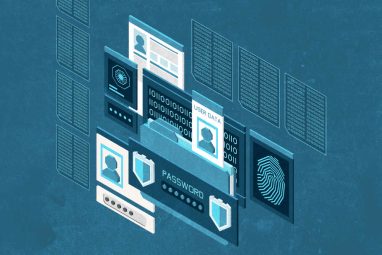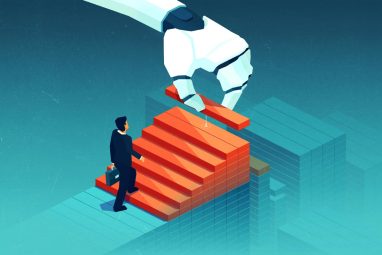Unlocking Gen AI’s Potential in the GCC: Strategies for Scaling Success
While many GCC organizations are investing in generative AI, a new McKinsey report reveals few have scaled its implementation to extract significant value.
Topics
MIT SMR CONNECTIONS
News
- Identity-based Attacks Account for 60% of Leading Cyber Threats, Report Finds
- CERN and Pure Storage Partner to Power Data Innovation in High-Energy Physics
- CyberArk Launches New Machine Identity Security Platform to Protect Cloud Workloads
- Why Cloud Security Is Breaking — And How Leaders Can Fix It
- IBM z17 Mainframe to Power AI Adoption at Scale
- Global GenAI Spending to Hit $644 Billion by 2025, Gartner Projects

[Image source: Krishna Prasad/MITSMR Middle East]
Generative AI (Gen AI) holds immense promise for the economies of the Gulf Cooperation Council (GCC) nations, yet few organizations in the region are capitalizing on its full potential. Despite widespread interest and early investments, many organizations remain stuck in the pilot phase, according to a recent McKinsey survey conducted in partnership with the GCC Board Directors Institute.
The survey, The State of Gen AI in the Middle East’s GCC Countries: A 2024 Report Card, which captured insights from 140 executives across eight different sectors, revealed that while 74% of GCC organizations are using Gen AI in at least one function, only 7% reported deriving more than 5% of their earnings from the technology. This emphasizes the crucial role of value creators—key stakeholders who drive technology adoption and amplify its impact—in ensuring that Gen AI delivers meaningful outcomes, highlighting substantial potential for growth.
Understanding the Scaling Challenge
It’s important to recognize that while the GCC region has unique economic and cultural aspects, technology serves as a bridge, transcending these barriers. Many challenges faced in the GCC are shared globally, creating opportunities for mutual learning and collaboration. By drawing insights from global technology leaders and leveraging the expertise of value creators within the region, a more comprehensive understanding and approach to innovation can be achieved.
However, moving beyond pilots to scale Gen AI implementations effectively requires a significant shift in mindset and operations. GCC organizations need to reimagine workflows, build foundational capabilities, and foster a culture of innovation.
“Many organizations find it easy to develop and run pilots,” explains Karan Soni, Associate Partner at QuantumBlack, AI by McKinsey. “Pilots can operate within limited parts of an organization with fewer stakeholders and simpler technology requirements. But scaling demands reimagining the use case, technology, workflows, data, and organizational culture simultaneously.”
Vinay Chandran, Partner and co-leader of QuantumBlack in EEMA, echoes this sentiment: “The key to moving from pilot to scale is laying the right foundations. This involves integrating technology, building capabilities, and embedding new ways of working into the organization’s DNA.”
The Foundations for Scaling Gen AI
McKinsey’s survey stresses on the importance of building capabilities in five key areas: technology, data, talent, operating models, and risk management. Here’s how GCC organizations can address these priorities:
Domain re-wiring strategy
“It’s essential to define the vision for the domain and how it will be re-wired through Gen AI and other technologies,” says Chandran. “In our perspective domain re-wiring means re-imagining the existing enterprise end-to-end workflows to achieve a step change in business outcome. This requires identifying the relevant Gen AI and other technology capabilities, talent requirements and operating model changes to achieve this business outcome. It is critical to avoid the pitfall of simply acquiring technology without aligning it with your business needs.”
Organizations must also evaluate whether to build, customize, or source technology solutions. As Soni points out, “Customizing off-the-shelf solutions or developing in-house tools tailored to your workflows can make a significant difference. Additionally, designing workflows around technology ensures seamless integration into daily operations.”
Data as a Catalyst
Data forms the backbone of all AI initiatives. “Developing a robust data strategy is critical,” Chandran advises. “Start by consolidating and cleaning high-value data to drive initial use cases. Then, move toward productizing your data—turning unstructured datasets into reusable assets that unlock new applications.”
Soni adds, “Creating data products not only enables more use cases but also builds momentum by showing tangible value early in the transformation journey.”
Talent Development
Competition for top-tier AI talent is fierce in the GCC. “To attract and retain skilled professionals, organizations need to offer compelling opportunities that go beyond compensation,” says Soni. “Articulate the exciting challenges they’ll work on and provide clear pathways for career growth.”
Chandran emphasizes the importance of upskilling existing talent: “Many Gen AI applications aren’t entirely new. With proper training, your existing workforce can adapt to these technologies and drive innovation from within.”
Centralized Operating Models
“Gen AI is too nascent for decentralized execution,” notes Soni. “Organizations must centralize their Gen AI capabilities initially to build a strong foundation before scaling across business units.”
This centralized approach ensures consistency in execution and helps organizations address common challenges, such as integration and resource allocation.
Proactive Risk Management
“Risk management is critical, especially in regions with unique regulatory landscapes,” says Chandran.
While governments are actively updating regulations that impact the use and deployment of AI/Gen AI, the region is still catching up. Organizations must future-proof themselves against changes in regulations by adopting risk management practices that are in line with advanced regulatory ecosystems like the EU.
“Enterprises need to be responsible in proactively managing potential risks (e.g., bias, hallucination, data security breaches) and be steadfast in monitoring these risks. Enterprise-wide governance mechanisms and tools enable continuous review and execution of remedial actions,” he adds.
Overcoming Cultural and Organizational Barriers
Organizational inertia often hampers large-scale transformations. “Culture plays a crucial role in scaling Gen AI,” observes Chandran. “Leadership must set a clear vision, communicate it consistently, and role model the desired behaviors. Decision-making processes should reflect a commitment to data-driven insights.”
Soni highlights the importance of knowledge sharing: “Spotlighting success stories within the organization can inspire others to embrace change. Whether it’s through town halls or informal lunch sessions, sharing progress creates momentum.”
External partnerships can also accelerate cultural shifts. “Establishing partnerships across multiple stakeholders (e.g., universities, technology leaders, external advisors etc) bring fresh perspectives and best practices,” Chandran adds. “But ultimately, cultural transformation must be driven from within.”
Reimagining domain workflows: A Case in Point
Domain workflows are incredibly important because they essentially allow you to understand how people may consume technology that you are building. Soni shares a compelling example: “A manufacturing client developed a Gen AI tool to guide shop floor operators with real-time production decisions. Initially, adoption was low because operators had to switch between their data portal and the Gen AI application.”
“By integrating the Gen AI guidance into the existing data portal, the organization streamlined workflows, making the tool user-friendly and significantly boosting adoption,” he explains. “This highlights the importance of designing workflows that fit seamlessly into existing operations.”
The Road Ahead
While many GCC organizations have made strides in adopting Gen AI, there is ample room to extract greater value. “Maximizing Gen AI’s impact requires reimagining entire workflows rather than optimizing individual processes,” Chandran concludes. “Organizations need to adopt a holistic approach, focusing on value creation across interconnected use cases.”
Soni agrees: “The longer organizations delay this transformation, the more elusive Gen AI’s rewards will become. The time to act is now.”
Read the full report to explore more insights from QuantumBlack, McKinsey’s AI practice.





